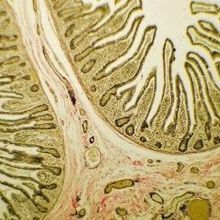Login
SubscribeRNA sequencing, cell & molecular biology

Spaceflight Alters Genes of Human Stem Cell–Derived Heart Cells
Emily Makowski | Nov 7, 2019 | 3 min read
Cardiomyocytes made from iPSCs aboard the International Space Station had upregulated mitochondrial functioning.

Increased Neuronal Activity Shortens Lifespan in Animals
Ruth Williams | Oct 16, 2019 | 3 min read
Suppressing the natural age-related increase in neuronal excitation lengthens the lives of worms, and there are indications that the same may be true for mice and humans.

Drug Discovery Techniques Open the Door to RNA-targeted Drugs
Amber Dance | Jun 1, 2019 | 8 min read
New ways to search for druggable RNAs and matching small molecules

Neural Cell Types Tied to Autism Identified in Single-Cell Study
Ruth Williams | May 16, 2019 | 3 min read
An RNA analysis of human brain cells reveals gene expression changes in cortical neurons and microglia linked to autism spectrum disorder (ASD).

Catalog of the Small Intestine Reveals New Cell Subtypes
Kerry Grens | Nov 8, 2017 | 2 min read
Single-cell analyses from mouse samples detail the changes in cell distribution during infections.

Sex Reversal Mystery Explained?
Jef Akst | Jun 15, 2017 | 1 min read
A proposed mechanism for how bearded dragons with male chromosomes hatch as females at high temperatures
